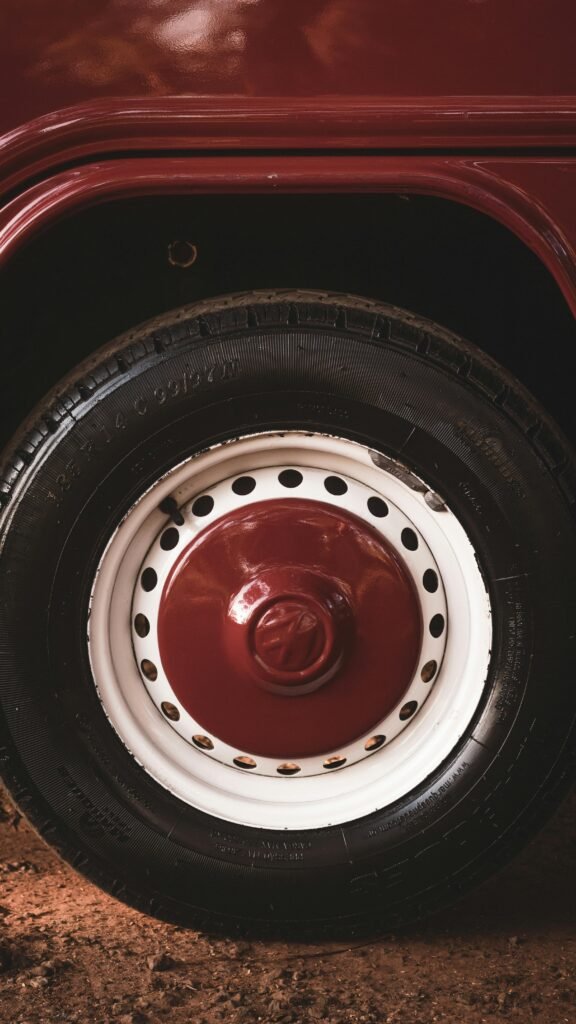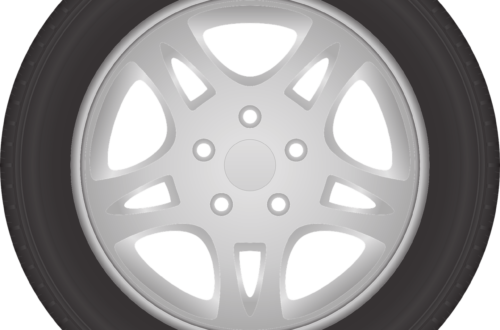Are you ready to hit the road and make the most of the upcoming season? Before you do, it’s crucial to ensure that your tires are in top-notch condition. In this comprehensive guide, we will share valuable advice on seasonal tire maintenance to help you enhance your driving experience and keep yourself and your passengers safe. Discover the essential tips and tricks to prolong the lifespan of your tires, improve fuel efficiency, and maintain optimal traction in any weather condition. From inspecting tread depth to understanding the importance of tire rotations, let’s embark on this journey together and unlock the secrets of perfect tire maintenance.
Inspecting Tires
Checking Tire Pressure
Regularly inspecting your tires is an important part of seasonal tire maintenance. One of the key aspects to check is the tire pressure. Proper tire pressure is crucial for optimal performance, safety, and fuel efficiency. To check your tire pressure, you will need a tire pressure gauge. Remove the valve cap from each tire and firmly press the gauge onto the valve stem. The gauge will provide a reading that indicates the amount of pressure in the tire. Compare this reading to the recommended pressure specified by the vehicle manufacturer. If the pressure is too low, use an air compressor to add air, and if it is too high, release some air using the valve on the tire.
Examining Tread Depth
Another important aspect of tire inspection is examining the tread depth. The tread depth refers to the measurement of the grooves in the tire that provide grip and traction. As tires wear down over time, the tread depth decreases, which can impact the tire’s ability to maintain traction on the road. To examine the tread depth, you can use a tread depth gauge or the old penny test. Insert the gauge into the grooves or place a penny upside down, with Lincoln’s head facing you, into the tread. If the tread depth is below the recommended level or if you can see the top of Lincoln’s head on the penny, it is time to consider replacing the tires.
Inspecting for Signs of Damage
In addition to checking the tire pressure and tread depth, it is crucial to inspect your tires for any signs of damage. Look for any cuts, bulges, sidewall cracks, or punctures. These issues can compromise the structural integrity of the tire and affect its performance and safety. If you notice any damage, it is best to consult a professional tire service provider to assess the severity and determine if the tire needs to be repaired or replaced.
Checking for Uneven Wear
Uneven wear patterns on your tires can indicate underlying issues with your vehicle or improper tire maintenance. Inspect each tire for signs of uneven wear, such as more wear on one side than the other or the center of the tread wearing faster than the edges. These patterns can be caused by misalignment, improper tire inflation, or suspension problems. If you notice any uneven wear, it is recommended to have your vehicle inspected by a professional and address the underlying cause to prevent further damage to your tires.
Rotating Tires
Understanding the Importance of Tire Rotation
Tire rotation is an essential part of seasonal tire maintenance. It involves moving the tires from one position to another on the vehicle to ensure even wear. The front and rear tires can wear differently due to variations in weight distribution and the way the vehicle handles. By rotating the tires regularly, you can promote even wear and maximize the lifespan of your tires.
When to Rotate Tires
The frequency of tire rotation depends on various factors, including the type of vehicle, driving conditions, and tire manufacturer’s recommendations. As a general guideline, it is recommended to rotate your tires every 6,000 to 8,000 miles or every six months, whichever comes first. However, it is always best to consult your vehicle’s owner’s manual or a tire professional to determine the appropriate interval for your specific vehicle.
How to Rotate Tires
The exact tire rotation pattern will vary depending on the vehicle’s drivetrain and tire type. The most common rotation patterns are the forward cross pattern, the rearward cross pattern, and the X pattern. Consult your vehicle’s owner’s manual or seek professional guidance to determine the appropriate rotation pattern. If you are considering rotating the tires yourself, ensure that you have the necessary tools, such as a jack and jack stands, and follow the instructions carefully to avoid any accidents.
Benefits of Regular Tire Rotation
Regular tire rotation offers several benefits, including extended tire lifespan, improved fuel efficiency, better traction, and enhanced overall performance. By evenly distributing the wear, you can prevent premature tire replacement and ensure that each tire wears at a similar rate. This not only saves you money in the long run but also provides a safer and smoother ride.

This image is property of images.pexels.com.
Changing Tires
Knowing When to Change Tires
Knowing when to replace your tires is crucial for maintaining optimal performance and safety. The general rule of thumb is to replace tires when the tread depth reaches 2/32 of an inch. However, it is recommended to consider replacing them earlier, around 4/32 of an inch, to ensure better traction, especially in wet or snowy conditions. Additionally, if you notice any signs of damage or experience frequent flats, it is important to have your tires inspected and replaced if necessary.
Choosing the Right Seasonal Tires
Selecting the right seasonal tires is essential for driving safely and effectively in different weather conditions. Consider the climate in your area and the specific driving needs of your vehicle. Winter tires are designed to provide better traction and handling in cold, snowy, or icy conditions, while summer tires are optimized for warm weather performance. All-season tires offer a balance between the two and can be suitable for year-round use in milder climates. Consult a tire professional for guidance in selecting the most appropriate tires for your vehicle and driving conditions.
Steps to Properly Change Tires
If you choose to change your tires yourself, it is important to follow the proper steps to ensure safety and accuracy. Start by parking your vehicle on a flat surface and engaging the parking brake. Gather the necessary tools, such as a jack, lug wrench, and spare tire. Loosen the lug nuts on the current tire before lifting the vehicle with the jack. Once the vehicle is raised, remove the lug nuts completely and replace the tire with the spare or new tire. Tighten the lug nuts by hand in a star pattern, then lower the vehicle and fully tighten the lug nuts with the lug wrench. It is important to refer to your vehicle’s owner’s manual for specific instructions and torque specifications.
How to Store Tires
Properly storing your tires when they are not in use can help prolong their lifespan and maintain their performance. Start by cleaning the tires thoroughly to remove any dirt or debris. Place each tire in a tire storage bag or wrap it in plastic to protect it from sunlight, moisture, and temperature fluctuations. Store the tires in a cool, dry, and well-ventilated area away from direct sunlight and sources of heat. Hanging the tires or storing them on a tire rack can help prevent them from developing flat spots. When storing tires for an extended period, it is recommended to rotate them every few months to prevent any permanent damage from prolonged static weight on a single spot.
Maintaining Tire Pressure
Understanding the Optimal Tire Pressure
Maintaining the optimal tire pressure is crucial for your safety and the performance of your vehicle. The recommended tire pressure can usually be found in your vehicle’s owner’s manual or on a sticker located on the driver’s side door jamb or the inside of the fuel door. It is important to note that the recommended pressure may differ between the front and rear tires, especially in vehicles with different weight distributions. Always follow the manufacturer’s guidelines to ensure proper tire pressure.
Checking Tire Pressure Regularly
Regularly checking your tire pressure is essential to maintain optimal performance and safety. It is recommended to check the tire pressure at least once a month and before long trips. Use a tire pressure gauge to measure the pressure in each tire. If you find that the pressure is below the recommended level, add air until it reaches the proper pressure. On the other hand, if the pressure is too high, use the tire pressure gauge to release some air. It is important to check the tire pressure when the tires are cold, as driving for extended periods can increase the pressure and give inaccurate readings.
Inflating or Deflating Tires
It is important to inflate or deflate your tires according to the recommended pressure levels. Underinflated tires can lead to decreased fuel efficiency, reduced traction, and increased tire wear. Conversely, overinflated tires can result in a harsh ride, increased vulnerability to damage, and uneven wear. Always use an air compressor or a reliable air pump to inflate the tires, and ensure that the valve caps are tightly secured after adjusting the pressure.
The Importance of Proper Tire Pressure
Maintaining proper tire pressure is crucial for several reasons. Firstly, it ensures optimal handling and control of your vehicle, especially in emergency situations. Secondly, it promotes even tire wear, prolonging the lifespan of your tires and saving you money on replacements. Additionally, proper tire pressure enhances fuel efficiency, reducing your overall fuel consumption and carbon footprint. Finally, it contributes to a comfortable and smooth ride, as properly inflated tires provide better shock absorption and noise reduction.

This image is property of images.pexels.com.
Balancing Tires
The Importance of Tire Balancing
Tire balancing is an important procedure that ensures the weight of the tire and wheel assembly is evenly distributed. When a tire is unbalanced, it can lead to uneven wear, vibration, and a decrease in vehicle performance. Balancing your tires can help prevent these issues and provide a smoother, safer, and more comfortable ride.
Recognizing Signs of Unbalanced Tires
Unbalanced tires can exhibit several signs that indicate the need for balancing. If you notice excessive vibration, especially at higher speeds, it could be a sign that your tires are unbalanced. Other signs to look out for include uneven tread wear, steering wheel vibrations, and shaking or rattling of the vehicle. If you experience any of these symptoms, it is recommended to have your tires balanced by a professional as soon as possible.
How to Balance Tires
Tire balancing is typically performed using specialized equipment by a professional tire service provider. The process involves placing the tire and wheel assembly on a balancing machine, which identifies any weight imbalances. The technician then adds small weights to the rim of the wheel to counterbalance the uneven weight distribution. This ensures that the tire rotates evenly and smoothly.
Frequency of Tire Balancing
The frequency of tire balancing depends on various factors, including driving conditions, vehicle type, and tire manufacturer’s recommendations. It is generally recommended to have your tires balanced whenever they are replaced or rotated. Additionally, if you notice any signs of unbalanced tires, it is important to have them balanced promptly. Regular tire balancing can help prolong the lifespan of your tires, improve vehicle performance, and enhance your driving experience.
Alignment
Why Wheel Alignment Matters
Wheel alignment plays a crucial role in tire maintenance and overall vehicle performance. Proper alignment ensures that all four wheels are parallel to each other and perpendicular to the ground. When the wheels are out of alignment, it can lead to uneven tire wear, reduced fuel efficiency, poor handling, and even premature suspension component wear. Maintaining proper wheel alignment helps extend the lifespan of your tires, ensures optimal vehicle handling, and promotes a comfortable and safe driving experience.
Signs of Misalignment
There are several signs that indicate your vehicle may be out of alignment. Uneven tire wear, such as excessive wear on the inner or outer edges of the tread, is a common indicator. You may also notice that your vehicle pulls to one side while driving, or the steering wheel is not centered when driving straight. Vibrations or a shaky steering wheel can also be signs of misalignment. If you experience any of these symptoms, it is important to have your vehicle’s alignment checked and adjusted if necessary.
Wheel Alignment Procedures
Wheel alignment is typically performed by a professional using specialized alignment equipment. The process involves measuring and adjusting the angles of the wheels, known as camber, toe, and caster. The technician will use precision instruments to assess the current alignment angles and make adjustments accordingly. It is important to note that different vehicles may have specific alignment specifications, so it is best to consult your vehicle’s owner’s manual or a professional for the correct alignment procedures.
Benefits of Regular Alignment
Regular wheel alignment offers a range of benefits, including extended tire lifespan, improved fuel efficiency, enhanced vehicle handling, and increased safety. By maintaining proper alignment, you can ensure that your tires wear evenly, reducing the need for premature replacements. Improved fuel efficiency results from reduced rolling resistance, as properly aligned wheels require less energy to move the vehicle. Proper alignment also enhances vehicle handling, providing better control and stability, especially during cornering and braking. Ultimately, regular alignment contributes to a safer and more enjoyable driving experience.

This image is property of images.pexels.com.
Storing Tires
Preparing Tires for Storage
Properly preparing your tires for storage can help maintain their condition and extend their lifespan. Start by cleaning the tires thoroughly to remove any dirt, brake dust, or grime. This prevents the accumulation of contaminants that can degrade the rubber over time. Inspect the tires for any signs of damage or wear and address any issues before storage. It is also recommended to slightly overinflate the tires to compensate for any air loss during storage.
Finding Proper Tire Storage Space
When selecting a storage space for your tires, it is important to consider certain factors that can affect their condition. Choose a cool, dry, and well-ventilated area to prevent excessive heat, moisture, or humidity that can deteriorate the rubber. Ideally, the storage area should not be exposed to direct sunlight or extreme temperature fluctuations. Additionally, avoid storing the tires near sources of chemicals, solvents, or ozone-generating equipment, as these can also damage the rubber.
Tips for Safe Tire Storage
Proper storage techniques can help ensure that your tires remain in good condition during their time off the vehicle. Store the tires upright, avoiding any direct contact with the ground. Placing the tires on a pallet or tire rack can help prevent them from developing flat spots. If stacking multiple tires, ensure that no heavy objects are placed on top of them, as this can cause deformation. It is also important to periodically check the tire pressure during storage and adjust if necessary.
How to Extend Tire Lifespan Through Storage
By following proper tire storage practices, you can extend the lifespan of your tires and maximize their performance when they are reinstalled on your vehicle. Keeping the tires clean and free from contaminants reduces the risk of premature aging and degradation. Storing the tires in an appropriate environment helps preserve their structural integrity and prevents cracking or dry rot. Checking the tire pressure regularly during storage helps maintain the correct pressure and prevents any potential damage that may occur from underinflation or overinflation. Properly storing your tires ensures that they are ready for use when the seasons change, allowing you to enjoy their full potential.
Using Snow Chains
Understanding the Need for Snow Chains
Snow chains are an essential tool for safe and reliable driving in snowy or icy conditions. They provide additional traction and grip, allowing your vehicle to maintain control and maneuverability on slippery roads. Snow chains are particularly beneficial for vehicles that are not equipped with winter tires or for regions with frequent snowfall. It is important to note that some states or regions have specific regulations regarding the use of snow chains, so it is essential to familiarize yourself with the local laws before using them.
Types of Snow Chains
There are different types of snow chains available, each offering specific features and benefits. The most common types include ladder-style chains, diamond-pattern chains, and cable chains. Ladder-style chains consist of metal crossbars connected by a series of chains, providing excellent traction. Diamond-pattern chains have metal rings that create a zigzag pattern, offering good traction and a quieter ride. Cable chains are made of steel cables wrapped around rollers, providing a lightweight option with good traction. It is important to choose the appropriate type of snow chains based on your vehicle’s tire size and the driving conditions you expect to encounter.
Installing Snow Chains Properly
Proper installation of snow chains is crucial to ensure safe and effective traction. Start by parking the vehicle on a flat surface and engaging the parking brake. Lay the chains flat on the ground and make sure they are not tangled or twisted. Position the chains over the tire, ensuring that the opening faces forward and the hooks are on the outside of the tire. Connect the hooks or fastening mechanism, and then manually pull the chains tight. Drive a short distance and inspect the chains to ensure they are properly secured. It is important to follow the specific installation instructions provided by the manufacturer for the type of snow chains you have.
Snow Chain Maintenance
To ensure optimal performance and longevity of snow chains, regular maintenance is important. After driving on snowy or icy roads, remove the snow chains as soon as feasible to prevent damage and corrosion. Clean the chains thoroughly to remove salt, dirt, and debris, as these can lead to premature deterioration. Dry the chains completely before storing them in a clean and dry area. It is also recommended to periodically inspect the chains for signs of wear or damage, such as broken links or excessive rust. If any issues are detected, replace the snow chains promptly to maintain safe driving conditions.
Cleaning Tires
The Importance of Regular Tire Cleaning
Regular tire cleaning is essential not only for maintaining their appearance but also for their overall performance and longevity. Tires can accumulate dirt, mud, road grime, brake dust, and other contaminants during regular driving. These substances can degrade the rubber, affect traction, and even lead to premature aging or cracking. Cleaning your tires regularly helps remove these contaminants and keeps them in optimal condition.
Steps for Cleaning Tires
Cleaning your tires can be a straightforward process when following a few simple steps. Start by rinsing the tires with water to remove loose dirt and debris. Spray a dedicated tire cleaner or mild soap onto the tires, ensuring even coverage. Use a soft-bristled brush or tire brush to scrub the tires gently, paying close attention to the sidewalls and tread. Rinse off the cleaner thoroughly with water, making sure to remove all the soapy residue. Dry the tires completely using a clean microfiber cloth or allow them to air dry.
Choosing Appropriate Tire Cleaning Products
Selecting the right tire cleaning products is essential to ensure effective and safe cleaning. It is recommended to use a dedicated tire cleaner specifically formulated for cleaning tires. These cleaners are designed to break down and remove dirt, grime, and road residue without damaging the rubber or causing discoloration. Avoid using harsh chemicals, solvents, or abrasive cleaners, as they can damage the tire’s surface and degrade its performance. Always follow the manufacturer’s instructions when using any tire cleaning products.
Tips for Maintaining Clean Tires
To maintain clean tires and prolong their appearance, there are a few additional tips to keep in mind. Regularly washing your vehicle can help prevent the accumulation of dirt and grime on the tires. Applying a tire dressing or protectant after cleaning can help enhance the tire’s appearance and protect it from UV rays. However, it is important to use a non-greasy, water-based product to avoid tire sling or any adverse effects on the tire rubber. Lastly, avoid using abrasive brushes or tools that can cause damage to the tire surface. By following these tips, you can enjoy clean, well-maintained tires that contribute to your vehicle’s overall aesthetic appeal.
Seeking Professional Help
Signs That Require Professional Tire Service
While there are several aspects of tire maintenance that you can handle yourself, there are times when seeking professional help is necessary. If you observe any signs of significant damage, such as sidewall cracks, bulges, or major punctures, it is best to consult a professional tire service provider. Additionally, if you are unsure about any aspect of tire maintenance or if you lack the necessary tools or experience, it is advisable to seek professional assistance. They have the expertise, tools, and resources to accurately assess your tires and provide the appropriate solutions.
Choosing a Reliable Tire Service Provider
When selecting a tire service provider, it is important to choose a reliable and reputable establishment. Look for providers that have a good reputation in the community and positive customer reviews. Consider factors such as their experience, certifications, and the range of services they offer. It is also beneficial to inquire about their warranty policies, as this indicates their confidence in the quality of their work. Seeking recommendations from friends, family, or trusted automotive professionals can help you find a reliable tire service provider.
When to Visit a Professional
There are certain situations when visiting a professional tire service provider is recommended. If you experience persistent vibrations, uneven tire wear, or handling issues, it is important to have your tires and vehicle inspected by a professional. They can diagnose any underlying issues, such as misalignment or suspension problems, and provide the necessary repairs or adjustments. Additionally, when it comes to complex procedures like wheel alignment or balancing, it is best to rely on professionals who have the specialized equipment and training to perform these tasks accurately.
Benefits of Professional Tire Maintenance
Seeking professional tire maintenance offers numerous benefits that contribute to your overall safety and driving experience. Professionals can accurately assess the condition of your tires, identify any potential issues, and recommend the most suitable solutions. Their expertise ensures that all procedures, such as tire rotation, balancing, or alignment, are performed correctly, maximizing the lifespan of your tires and improving your vehicle’s performance. A professional tire service provider can also offer personalized advice based on your specific driving conditions and requirements. By entrusting your tire maintenance to professionals, you can enjoy peace of mind, knowing that your tires are in good hands.





